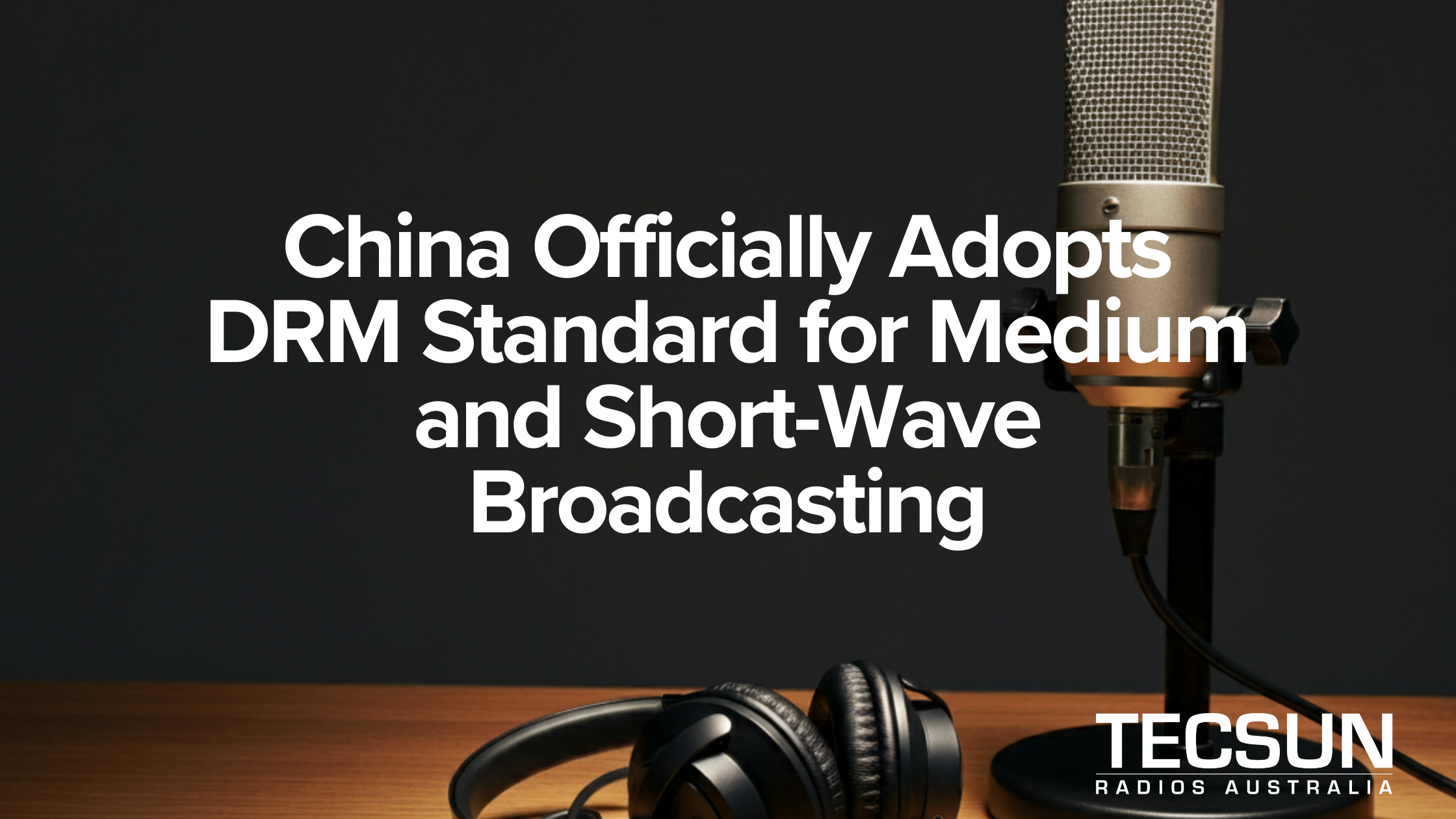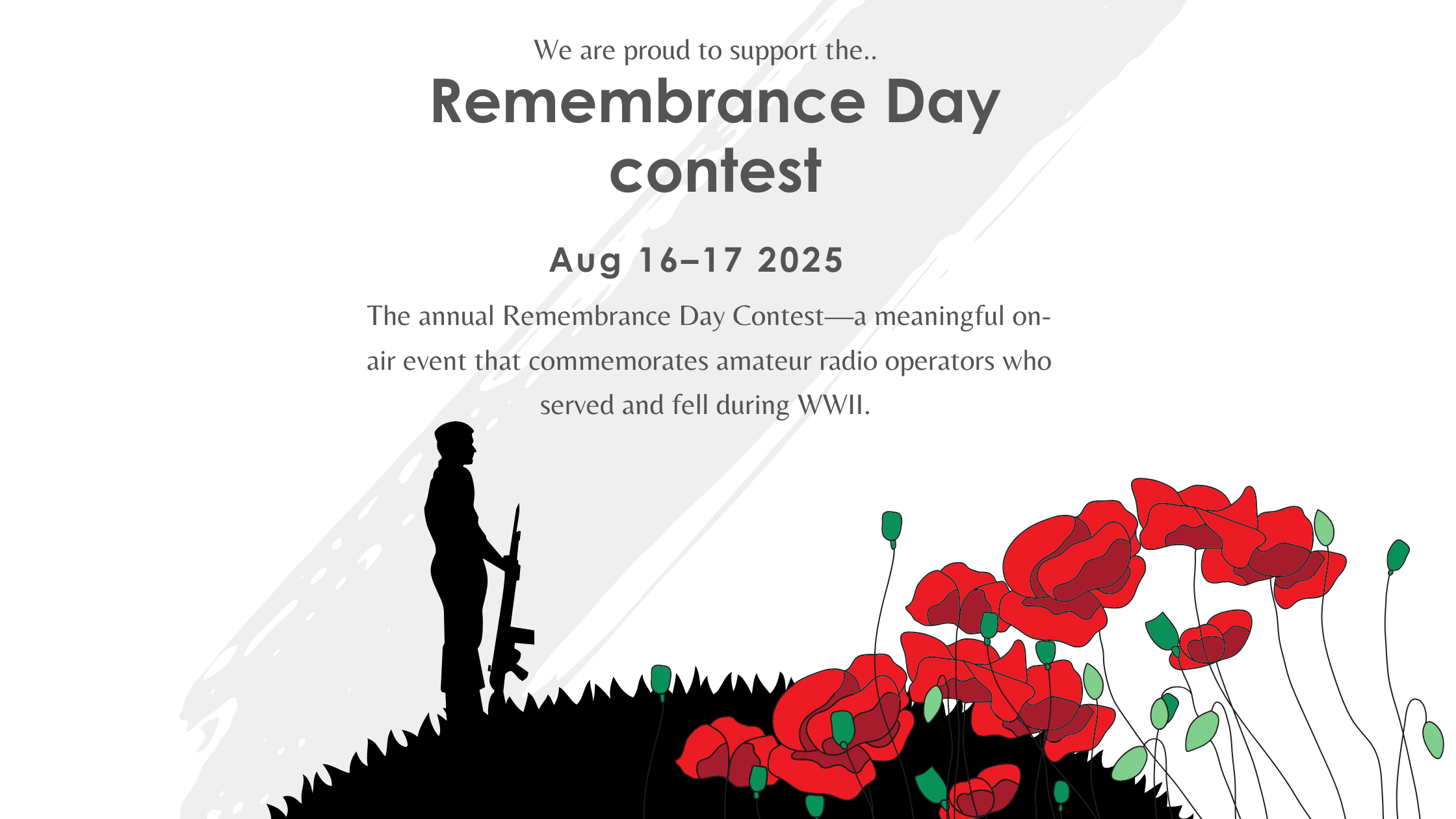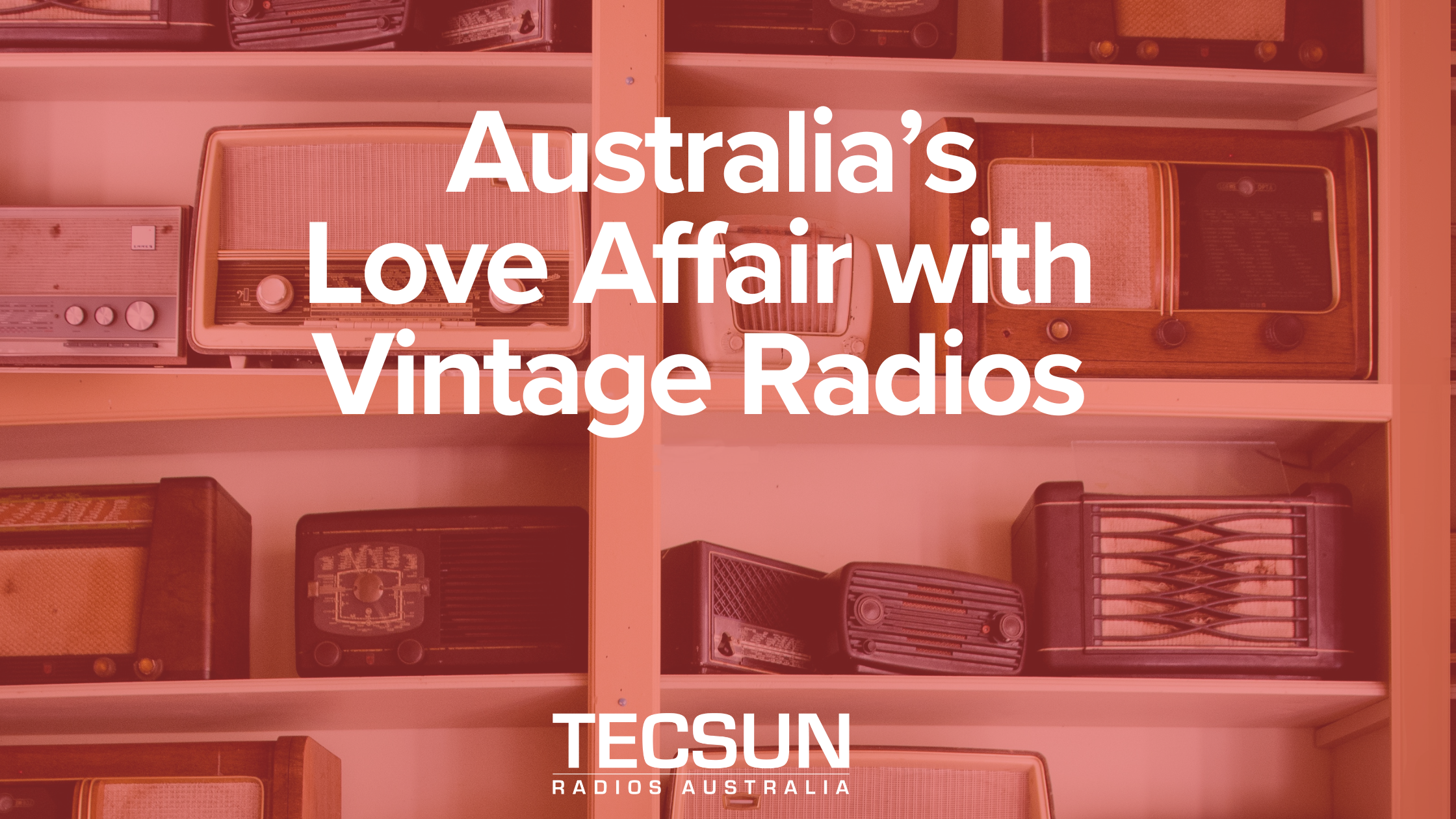
On 1 August 2025, China’s National Radio and Television Administration (NRTA) announced the release of its new official industry standard, GY/T 423-2025: Technical Specifications for Medium and Short-Wave Digital Sound Broadcasting, which had been issued a few days earlier on 29 July 2025.
This move marks the formal adoption of the international Digital Radio Mondiale (DRM) standard as the technical basis for digital broadcasting on the AM bands for China’s domestic radio services.
Who is the NRTA?
The NRTA is China’s top-level broadcasting regulator, responsible for setting policies and issuing technical standards (GY/T series) to guide the nation’s broadcasting and manufacturing sectors. These standards are widely used by broadcasters, equipment suppliers, and manufacturers to ensure compatibility and consistent service delivery.
About DRM on Medium and Short Wave
Digital Radio Mondiale (DRM) is a global digital broadcasting system developed by the DRM Consortium and recognised by the European Telecommunications Standards Institute (ETSI).
DRM offers reliable signal delivery and advanced features, including:
- xHE-AAC audio codec for excellent sound quality at low bitrates
- Emergency Warning Functionality (EWF) for rapid disaster alerts
- Journaline interactive text service for news, information, and education
- Support for multiple languages, distance learning, and emergency communications
Importantly, DRM can work with existing medium and shortwave transmitters and uses the same frequency allocations, making it cost-effective for broadcasters.
China’s Growing Institutional Backing for DRM
The NRTA’s announcement follows years of growing support from government bodies. In September 2023, three major Chinese agencies – the Ministry of Industry and Information Technology (MIIT), the NRTA, and the State Administration for Market Regulation (SAMR) – jointly encouraged the domestic automotive industry to include DRM reception capability in AM radios. They also urged provincial transmission facilities to trial DRM broadcasting.
The result? Over 31 vehicle manufacturers and more than 70 industry partners have since been engaged in DRM-related projects.
In 2024, the MIIT and NRTA invited public comment on revising national standards for in-vehicle wireless reception. The consultation wrapped up on 25 October 2024, with the decision to draft a future mandatory national standard for DRM compatibility.
Current DRM Operations in China
Right now, China runs seven DRM-enabled shortwave transmitters for domestic coverage, mainly targeting the busy eastern regions but also capable of reaching the entire country. These transmitters can also be used internationally by China Radio International (CRI).
China National Radio (CNR) currently airs daily DRM shortwave programs for local audiences, serving multiple regions across the country.
With this latest industry standard in place, DRM in China looks set to move from trials into mainstream adoption.
Info via https://www.drm.org/
Long before smartphones and streaming services, Australians gathered around the radio—an elegant box of valves and wires that brought the world into their living rooms. This Throwback Thursday, we’re tuning into the golden age of vintage radios and the role they played in shaping Aussie culture.
When Radios Ruled the Nation
From the 1930s to the 1960s, radios were the heartbeat of Australian homes. Whether it was catching the latest cricket scores, listening to the Queen’s speech, or enjoying a live bush ballad, radio was the nation’s storyteller. In outback towns and coastal cities alike, it connected Australians across vast distances.
Stations like 3LO in Melbourne, 2BL in Sydney, and 4QG in Brisbane were pioneers of the airwaves. Families would huddle around their sets for news, drama serials, and music—often with a cuppa in hand and the dog curled up nearby.
Design That Endures
Vintage radios weren’t just functional—they were works of art. Crafted from rich timber, Bakelite, and gleaming chrome, they reflected the design trends of their time. Brands like Astor, AWA, Healing, and Kriesler became household names, and their radios are now treasured by collectors and retro lovers alike.
Some enthusiasts are even giving these beauties a modern twist—converting them into Bluetooth speakers while preserving their classic charm.
Preserving the Past
Across Australia, museums and collectors are keeping radio history alive. The National Film and Sound Archive in Canberra holds a treasure trove of broadcasting history, while local antique shops and vintage fairs often feature lovingly restored sets.
Whether you’re in Perth, Hobart, Darwin or anywhere in between, chances are you’ve seen one of these timeless pieces—or maybe even own one.

Each year, thousands of Australian amateur radio operators power up their rigs in mid-August—not just for the thrill of making contacts, but to honour a legacy.
This year’s Remembrance Day Contest will be held over the weekend of August 16–17, bringing together radio amateurs across VK, ZL and P29 call areas for one of the most meaningful events in the amateur radio calendar.
A contest with purpose
The Remembrance Day (RD) Contest is more than just a weekend of callsigns and contacts. It was first introduced in 1948 by the Wireless Institute of Australia (WIA) as a way to commemorate amateur radio operators who lost their lives during World War II.
The timing is symbolic—it takes place on the weekend closest to August 15, the date on which hostilities ceased in the Southwest Pacific in 1945. Each year, the contest brings the amateur radio community together to remember, reflect, and enjoy a spirit of friendly on-air competition.
How the contest works
The aim is simple: make contact with as many stations in VK, ZL and P29 as possible, on all amateur bands excluding the WARC bands (10, 18 & 24 MHz), and using traditional modes such as:
-
PHONE
-
CW (Morse Code)
-
RTTY (Radio Teletype)
Operators can use MF (160 metres), HF, and VHF & above. Whether you’re chasing contacts or logging them as a Shortwave Listener, it’s a great weekend to hone your operating or listening skills.
Tips for shortwave listeners
SWLs can join in the fun by tuning into these frequencies during the contest:
160m: 1843–1875 kHz
80m: 3535–3570 kHz and 3600–3700 kHz
40m: 7080–7300 kHz
20m: 14112–14300 kHz
15m: 21150–21450 kHz
10m: 28300–29100 kHz
It’s the perfect opportunity to test your antennas, refine your logging, and experience the buzz of a live contest weekend.
Gear to get you contest-ready
Thinking of participating or improving your reception over the RD weekend? We recommend checking out some of our top gear for both operators and listeners:
Xiegu G90 HF Transceiver
-
20W SDR-based radio
-
Built-in antenna tuner
-
0.5–30 MHz coverage
-
Real-time panadapter display
-
Compact, rugged and contest-friendly
HF Portable Dipole Antenna
Perfect for setting up in the field or at home, with coverage for the most-used HF bands.
10 Metre Amateur Transceiver & Base Station Antennas
Great options for working the 10m band, especially when band conditions open up.
Why this contest still matters
In a hobby that blends modern digital modes with century-old traditions, the Remembrance Day Contest stands out as a way to pause, reflect and connect—literally and figuratively. It’s a reminder that radio, even in its most technical form, carries with it real human stories.
Ready to join in?
Whether you’re operating, logging or just listening in, this is your weekend to tune in and pay tribute. Dust off the rig, check your antennas, and be part of this proud annual tradition.
For official contest rules, scoring, logging templates and more, head to the WIA website.
Need new gear? Explore our contest-ready range at tecsunradios.com.au
The Tecsun Radios Australia Team



